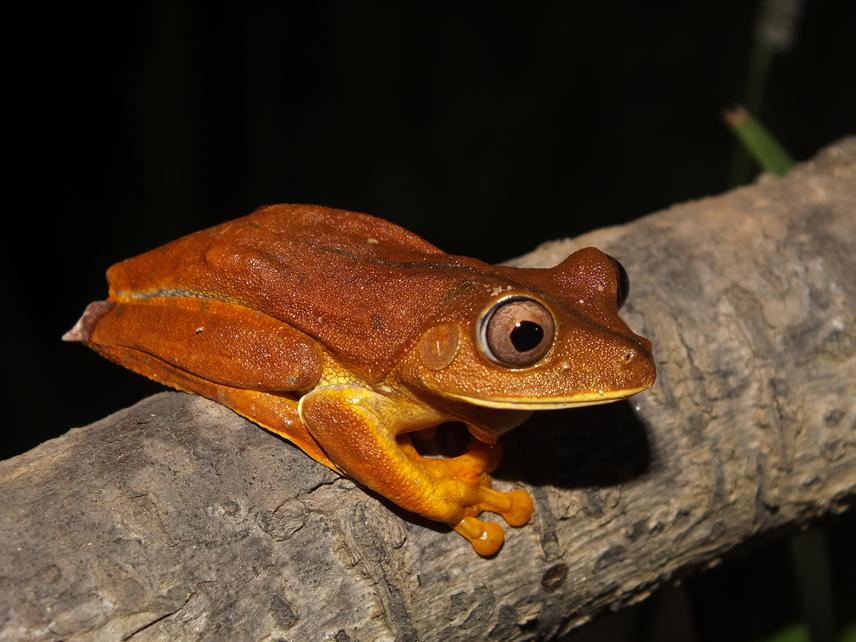Juliane Pereira Ribeiro
Other projects
21 Jul 2017
Diversity and Distribution of Amphibians in the Atlantic Forest of the State of Espírito Santo, South-Eastern Brazil
The Atlantic Forest is considered one of the main biodiversity hotspots in the world. However, the intense fragmentation of the landscape has made this biome highly threatened. The forest devastation and climate change scenario in this biome is of particular concern for amphibians, which are organisms highly sensitive to changes in the environment due to their morphological and physiological characteristics. Of the 625 known species of amphibians, 80% are endemic to this biome and about 50% are in some threat category.

Boana semilineata.
Previous studies have indicated that the Atlantic Forest may experience an increase in extreme climatic events in the future, in addition to a reduction in climatic sites suitable for amphibians in the coastal region of the biome. Therefore, it is urgent to assess which and how environmental factors influence the diversity and distribution of amphibians in the Atlantic Forest. In this project, we propose to update and deepen the knowledge about amphibians in the Atlantic Forest, evaluating the patterns of diversity and environmental factors that influence the structure of communities in this biome. The data set generated by this project will be able to support actions for the conservation and management of biological diversity throughout the biome, as it will indicate the distribution of endemic and endangered species.
In addition, the results of this project will contribute to theoretical advances on the factors that determine the occurrence of amphibian species along the Atlantic Forest degradation gradient. Thus, the results can also have practical applications, identifying the species most sensitive to landscape variations and changes in environmental factors, thus helping to establish conservation strategies for these species.